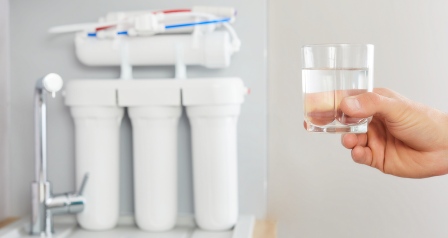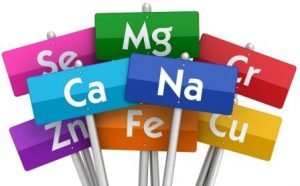Reverse osmosis is the famous and standard water filtration system used at home, commercial, and industrial spaces. This is because tap water is contaminated, which can be extremely dangerous, especially for children, pregnant women, the elderly, or the sick. So, we use reverse osmosis to filter the harmful substance, but it also filters the valuable minerals.
In this article, we will take a closer look at the RO filtration process and its side effects so that you will be prepared before you buy an RO water purifier.
What Is An Ro Water Purifier?

During RO filtration, the contaminated tap water passes through a thin semipermeable membrane. The membrane is less or equal to one micrometer so that the salt ions do not pass through with the water molecules. Harmful substances like lead, mercy, chromium, etc., are removed during the reverse osmosis process. But, along with the toxic substances, it also filters about 92-99% of the valuable minerals like calcium, potassium, etc.
Some of the best water purifiers for high TDS are KENT Grand RO + UV/UF + TDS Water Purifier, Aquaguard Aura 7L RO+UV e-boiling, Eureka Forbes Aquasure from Aquaguard, AO Smith Z9 Green RO Water Purifier, etc.
After analyzing many case studies regarding reverse osmosis water, the World Health Organisation reported that RO water “has a definite adverse influence on the animal and human organism.” According to the same study, the side effects resulted from the low magnesium or/and calcium level.
However, this debate is still ongoing as many people believe that the amount of valuable minerals one obtains from water is minimal. Another reason is the pH level of RO water (5 to 7), which is lower than the recommended level (6.5 to 8.5). But we consume lemon juice and coffee whose pH level is two and five, respectively.
What Are The Side Effects Of Ro Water Purifiers?
We saw how there are two contradicting statements to the same problem. However, we will look at some of the side effects that RO water purifiers can cause.
1. Leaches Minerals From Our Body

As mentioned before, the RO water purifier not only removes all the harmful substances in water like lead, arsenic, mercury, chromium, and so on, but it also removes essential minerals needed by our body. So, when our body does not get any minerals from water, the minerals we get from food and other sources are urinated away. We consume fewer minerals than what our body secretes, which can cause serious side effects.
2. Disturbed Functioning Of Vital Organs

According to studies conducted, low mineral count in RO water also has a negative effect on the homeostasis mechanism in our body. In this mechanism, our body constantly tries to balance the internal environment according to the external environment. This water “dilution of the electrolytes dissolved in the body water” disturbed the water content, acidity content, the functioning of the cells (electrolytes control the nutrients the cells receive.)
When there is the inadequate distribution of water and other nutrients to different cells, it will compromise the functions of our vital organs. After drinking RO water, you have symptoms like fatigue, headaches, muscle cramps, impaired heart rate, so consult a doctor.
3. Higher Risk Of Diseases

The minor symptoms were mentioned above, but if our body suffers mineral imbalance, it would negatively impact hormone secretion, kidney functions, bone density, heart diseases, and so on. There have been case studies that show how consumption of low mineral content water has increased the risks of cardiovascular diseases, chronic kidney disease, fractures in children, neurodegenerative diseases, gastrointestinal disorders, preterm birth, sudden deaths, pregnancy disorders, etc.
Minerals micronutrients from the water get absorbed from our body quicker than from food. So, when there is a low level of required nutrients, it can contribute to problems like high blood pressure (deficiency in magnesium and potassium), brittle bones (calcium deficiency), and even interference with blood formation (iron deficiency).
4. Water Wastage

According to a study conducted at North Dakota State University, “An RO unit delivering 2 gallons of treated water per day may discharge 8 to 15 gallons of wastewater per day to the septic system”. So, if you consume about 12 gallons a day for cooking and other day-to-day activities, then just imagine the amount of water that is going to waste.
5. Lowers The pH Level Of Water

You might be wondering how the pH level decreases during RO water purification. When the water passes through the semipermeable membrane, gases like carbon dioxide does not pass through. When CO2 combines with the free hydroxide ions present in water, it forms acidic Hydrogen Carbonate or bicarbonate ions. The more CO2 content in water, the lower the pH level; thus, it becomes more acidic.
You May Also Like To Read:
Water Filter Vs. Water Purifier: What Is The Difference?
Which Water Purifier Is Best For Your Health?
Why Your RO Water Tastes Bitter?
Takeaway
We saw a few side effects of RO water purifier but does that we should not use it? If you do not filter the contaminated water, you will be down with a sickness. However, if you are worried about the loss of essential minerals, then re-mineralization is the solution. For this, you can use a mineralizer cartridge that raises the pH level and adds essential minerals like calcium, potassium, sodium, and magnesium.
I hope you found this article useful. Please feel free to let us know your throughs through the comment section below.


